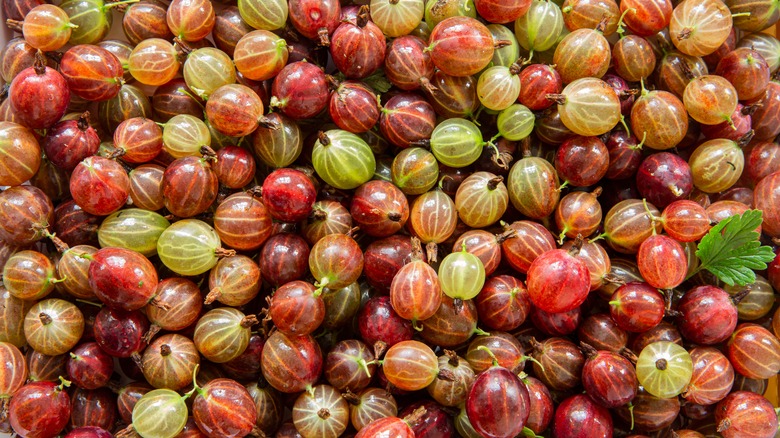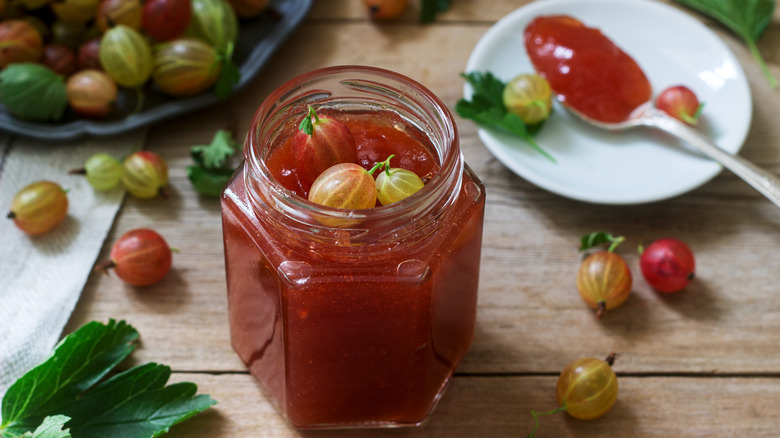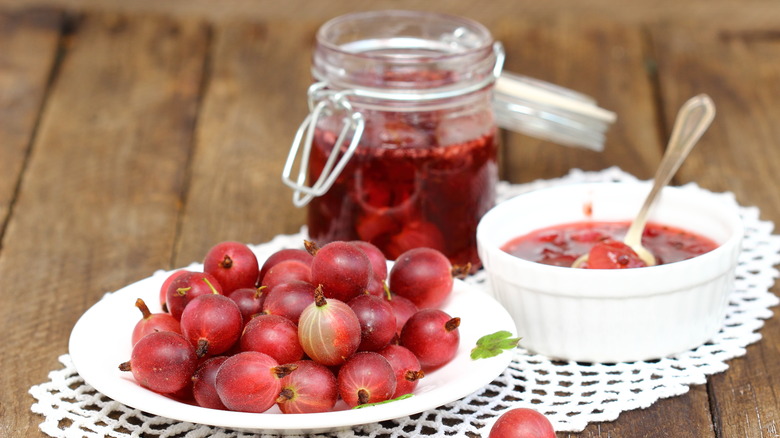Here's What To Know Before Making Home-Canned Gooseberries
Canning fresh fruit can be a wonderful way to preserve the bounty of nature well into the winter months when fewer fruits are growing. If you've made canned fruit like strawberries and blueberries before, the tart little gooseberry requires a very similar process. If you've got gooseberry bushes growing and have more than you know what to do with, there are two ways you can preserve these little summery treats whole: either hot packing, which involves boiling the berries in a liquid (typically syrup or water) for half a minute, then filling the jars; or raw packing, which involves putting the raw berries in the jar and then pouring the boiling liquid on top.
Though processing raw-packed gooseberries will take slightly more time, both of these techniques will leave you with perfectly delicious canned gooseberries. Use the National Center for Home Food Preservation's guidance for exact instructions on how to safely can these berries. Just be sure that regardless of which canning technique you're using, you leave about ½ inch of space between the top of the liquid and the lid of the jar. This headspace ensures that if the food inside expands, there's space for it to go.
What gooseberries are (and how to eat them)
You may be wondering, what are gooseberries in the first place? These little fruits look like grapes and pack a flavor that can either lean sour (as in green gooseberries) or sweet (for red or purple gooseberries). Though in the early 1900s they were banned in the United States at the federal level due to harboring a disease that was killing off white pines, now most states allow this bush to grow once more.
Canned gooseberries are a great filling for gooseberry pie, excellent when spooned on top of treats like ice cream or pudding and generally delicious anywhere you might put a spoonful of jam or sweetener. These canned treats can also be further processed into delicious jams or other preserves. If canned properly, home-canned gooseberries will last up to one year in the jar; just be sure to safely store canned goods and check for any off smells or issues with the can or jar before eating.
Health benefits of canned gooseberries
Gooseberries are great candidates for canning, not only because they preserve well, but because they are filled with a host of nutrients. A single cup of gooseberries provides up to 46% of your daily needed vitamin C, as well as 12% of copper and 9% of both vitamin B5 and manganese, among other vitamins and minerals.
They're also a high-antioxidant food and filled with fiber — helping you stay full for longer, keeping the digestive tract working, and protecting your body from certain disease risks. They're small fruits that pack a big nutritional punch.
Do note that the process of heating canned goods does affect some of their nutrients, especially water-soluble vitamins; however, most of the nutrition in canned goods stays effectively the same even after processing, so you can feel good about enjoying your canned gooseberries months after the fresh plants have gone out of season.


